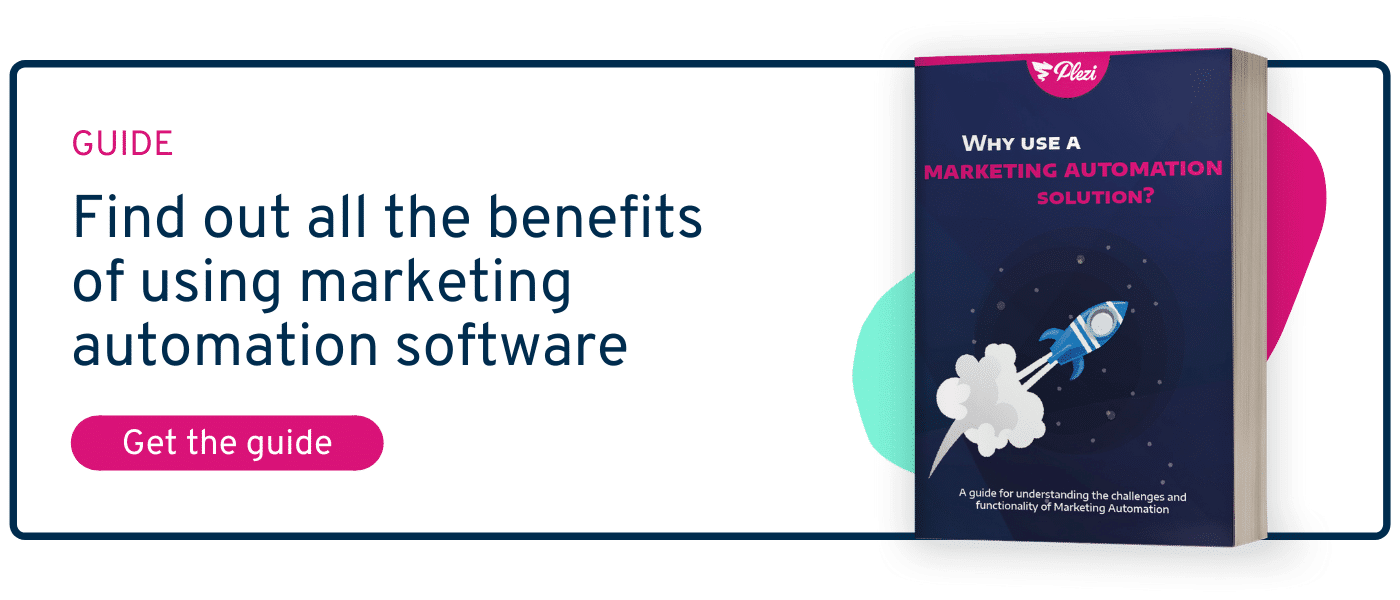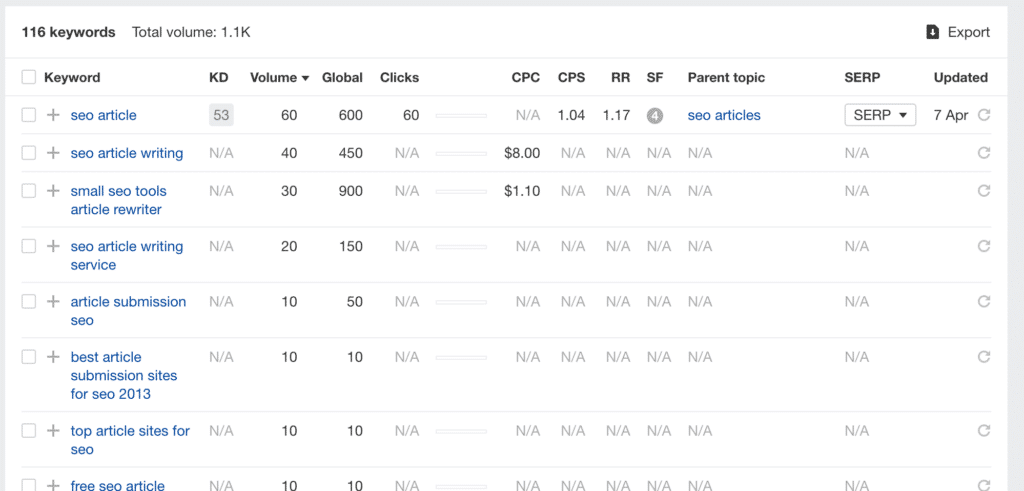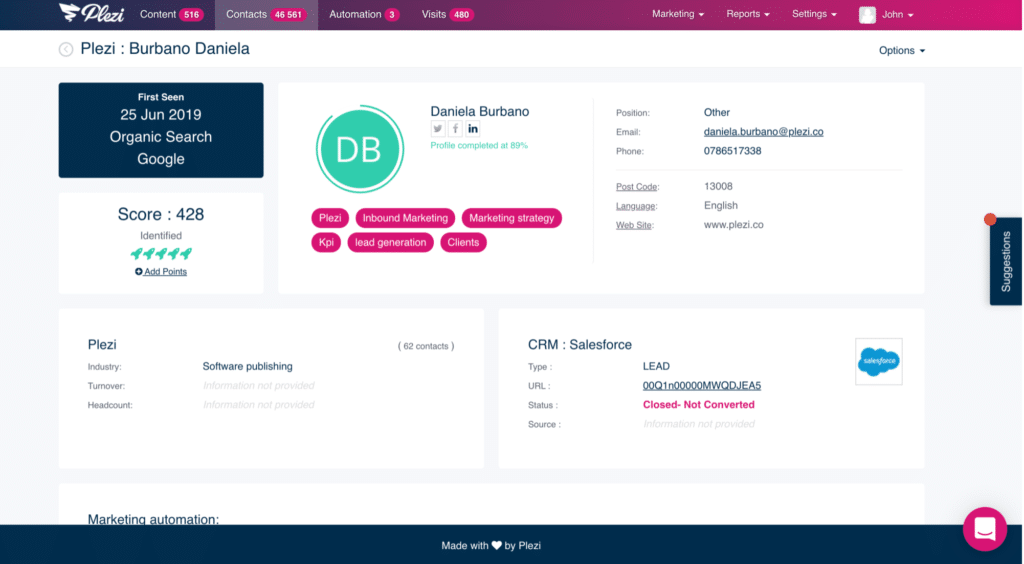Digital transformation has radically changed consumer behaviour. And with an increasing amount of the B2B buyer’s journey taking place online, marketing has become heavily reliant on technology. But there are now so many different marketing tools available that it can be difficult to choose which ones you really need for your business. To help you decide, we’ve put together a list of 10 marketing tools we think are essential for your martech stack, to help grow your small business. We’ve also given you what, in our opinion, are the best available examples of these, most of which we use at Plezi every day.
1. Content Management System (CMS) – WordPress
An inbound marketing strategy is based on creating and sharing high-quality content online. Having a content management system not only makes it a lot easier to create, store, and manage most of your marketing content, it will also save you time and money. Without it, you’ll need the services of a web developer any time you want to make changes to your website or have a solid understanding of HTML and CSS.
WordPress is an open-source content management system that is now used by more than 40% of all websites on the internet, including Plezi! It’s flexible, has an easy-to-use dashboard, and its basic features can be significantly extended with thousands of both free and premium plugins.
2. Graphic design tool – Canva
When many marketers think about creating content, they probably think first and foremost about written content. But including images with that content is hugely important, especially for content like blog posts. In addition to making content easier to read, images can improve how well your content ranks in search engines like Google. Content with images is also much more likely to be shared online.
By using a graphic design platform like Canva, you can easily create professional looking infographics, logos, presentations, and a whole lot more without having to be a graphic designer. We use Canva all the time at Plezi to create images that we use in both our blog posts and premium content like white papers, but also for social media, presentations, the website… the list is endless.

3. Search Engine Optimization (SEO) tool – ahrefs
If you really want the content you create to be visible online, it needs to be optimized for search engines. Leads that are acquired as a result of an organic search for content are 8 times more likely to result in a sale. Using an SEO tool will let you easily see what keywords your potential customers are searching for when creating content and provide you with a range of other features to improve your website’s performance.
The best all-in-one SEO tool that we’ve found is ahrefs. You can use it to help you do keyword research, but it also lets you optimize your content once it is published, see how your competitors are performing in search results, and learn from your sector’s highest-ranking content.
4. Social media management tool – Hootsuite
Social media is a great place for B2B companies to generate brand awareness and demonstrate their expertise, both of which will help you to generate leads. But creating posts for different social networks and then publishing them on individual sites can use valuable time that might be better spent elsewhere.
A social media management tool like Hootsuite lets you manage multiple social media accounts and schedule posts across all the social networks you use. That can save any marketing team a considerable amount of time and effort. Another option is to use a true marketing automation platform like Plezi, which can easily carry out all of these tasks and more with just a few clicks! What’s more Plezi means you can see the effectiveness of your social media and follow the rest of the customer journey on your site.
5. Pop-ups – Sumo
Once you’ve attracted visitors to your website, you need to convert them into prospects. That means convincing them to provide you with information like their email address in exchange for valuable content. Using an email capture tool to create attention-grabbing elements like pop-ups to do this can greatly increase the chances that visitors will give you this information.
Sumo is actually a suite of different tools, whose flagship feature is an email capture tool that lets you easily grow your email contact list. It also has the added benefit that it can be directly integrated into WordPress as a plugin. At Plezi, we often use Sumo to add pop-ups to blog posts that encourage people to sign up for additional premium content like webinars or our newsletter.
(An example of Plezi’s newsletter pop-up)
6. Live chat tool – Intercom
Another great way to convert website visitors into prospects is to engage with them directly on your website. By doing so, you can reduce bounce rates, increase visitor satisfaction, and free up valuable time for website support. And when more than 69% of consumers want to talk with a company in real-time, visitors increasingly expect websites to have a live chat tool to be able to do this.
A tool like Intercom lets you quickly engage visitors to your website using a combination of live chat and an automated chatbot that answers basic questions, or which directs visitors to more information. It can help you personalize the user experience of each visitor and ensure that you provide them with the right information at the right time.
There are also other tools to consider if you want to take your marketing strategy further, like account-based marketing tools.
7. Marketing automation software – Plezi
The most basic function of marketing automation software is to automate repetitive marketing actions, freeing up time for your marketing team so they can focus on actions with higher added value, and saving you money in the process.
But it also has a large number of features that can significantly improve the ROI of marketing and accelerate the growth of your business. A study by the Annuitas group says that businesses that use marketing automation to nurture prospects see a 451% increase in qualified leads who make purchases 47% larger than leads that haven’t been nurtured.
Plezi is the first true marketing automation platform. What sets Plezi apart from the competition is its smart campaign feature. Rather than nurturing leads with workflows based on predefined rules, Plezi uses your customers’ data to select content based on their specific interests and position in the marketing funnel. This can help you significantly shorten your sales cycle.
(An example of a lead in Plezi)
8. Website analytics tool – Google Analytics
You’ve published content, attracted visitors to your website, and perhaps even converted some of them into prospects. But each of these actions has probably provided you with a lot of information that will let you learn more about your visitors and how your content is performing. The only way to fully harness that information is by using a website analytics tool.
When many marketers think of analytics tools, they think of Google Analytics, and there are some good reasons for this. The free version of the tool is probably suitable for all but large companies, offering a number of features that many other analytics tools charge for. It can also easily be integrated with other Google products like Google Ads. It’s one of our key marketing tools at Plezi.
9. Workflow automation tool – Zapier
To make truly effective use of all the marketing tools that you have, they need to be able to communicate with each other. Using workflow automation to share information between tools can greatly increase your team’s productivity and eliminate human error in processes that involve data entry. While perhaps a less obvious choice than the other tools here, a workflow automation tool can actually make a big difference to your marketing efforts.
While there are a number of workflow automation tools now available, Zapier was the first to introduce codeless automation between tools and continues to be a leader in this area. At Plezi, we use it to automate all sorts of processes, and especially to integrate our marketing automation software with a range of other tools.
10. Project management software – Asana
Last but certainly not least, having a range of marketing tools at your disposal is great, but they need to be operated by a marketing team that is agile and that can work together effectively. The best way to ensure this is to use project management (or work management) software. One study says that 77% of high-performing projects use project management software in some form.
Asana is a comprehensive project management platform that streamlines work processes and team communication to save you valuable time. It also lets you plan with your team and set clear goals. The Plezi marketing team uses Asana to plan and track marketing campaigns, assign tasks to individual team members, monitor team performance, and keep all the team up to date with any changes.

What marketing tools do you already use in your business? Are there any you can’t do without that aren’t on our list? Why not tell us about them in the comments section below?









